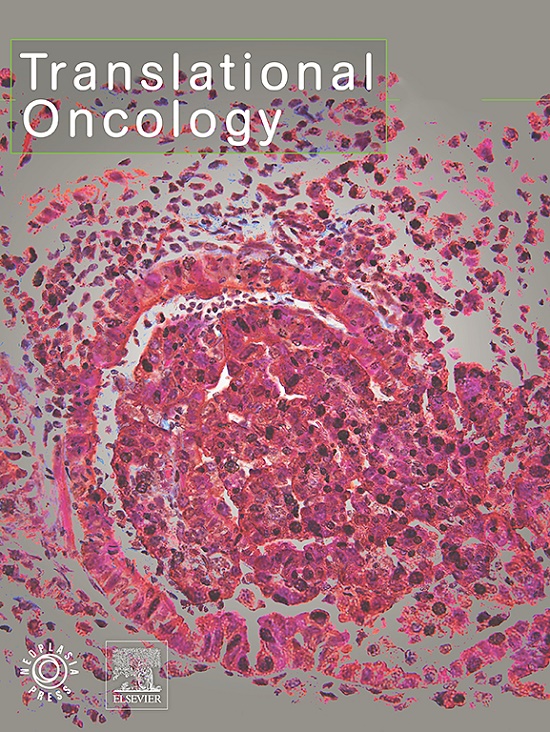Targeting FEN1/EXO1 to enhance efficacy of PARP inhibition in triple-negative breast cancer
IF 5
2区 医学
Q2 Medicine
引用次数: 0
Abstract
Triple-negative breast cancer (TNBC) is the most aggressive subtype of breast cancer. The only targeted therapeutic approach that has emerged for early TNBC patients with BRCA-mutations (BRCAMUT) are PARP inhibitors (PARPi). In combination, PARPi may benefit a larger cohort of TNBC patients. We used our previously identified 63-gene signature that was associated with PARPi response to identify candidate genes that could be therapeutic targets. We selected FEN1 for further investigation since its knockdown was associated with an increase in G2/M arrest, DNA damage, and apoptosis. We first tested LNT1, a FEN1/EXO1 inhibitor, in a panel of 10 TNBC cell lines. LNT1 sensitivity was identified predominantly in BRCA1-mutant/deficient cell lines. However, the combination of PARPi and LNT1 demonstrated a synergistic or additive effect in 7/10 cell lines, mainly in BRCA1/2 wild-type (BRCAWT) and BRCA2-mutant cell lines, with intrinsic and acquired resistance to PARPi. The greatest synergy was observed in a BRCA2-mutant cell line with acquired resistance to olaparib (HCC1395-OlaR), with a combination index value of 0.20. In the synergistic cell lines, BT549 (BRCAWT) and HCC1395-OlaR, the combination was associated with a rapid progression in DNA replication fork speed, an early and sustained increase in DNA damage in comparison to each of the single-agents. However, in the additive BRCA1/2 wild-type cell lines, MDAMB231 and HCC1806, the combination demonstrated a high DNA damage response that was largely driven by either talazoparib or LNT1. Therefore, targeting FEN1/EXO1 with PARPi is a promising targeted combination approach, particularly in the context of PARPi-resistant and BRCAWT TNBC.

求助全文
约1分钟内获得全文
求助全文
来源期刊

Translational Oncology
ONCOLOGY-
CiteScore
8.40
自引率
2.00%
发文量
314
审稿时长
54 days
期刊介绍:
Translational Oncology publishes the results of novel research investigations which bridge the laboratory and clinical settings including risk assessment, cellular and molecular characterization, prevention, detection, diagnosis and treatment of human cancers with the overall goal of improving the clinical care of oncology patients. Translational Oncology will publish laboratory studies of novel therapeutic interventions as well as clinical trials which evaluate new treatment paradigms for cancer. Peer reviewed manuscript types include Original Reports, Reviews and Editorials.
 求助内容:
求助内容: 应助结果提醒方式:
应助结果提醒方式:


